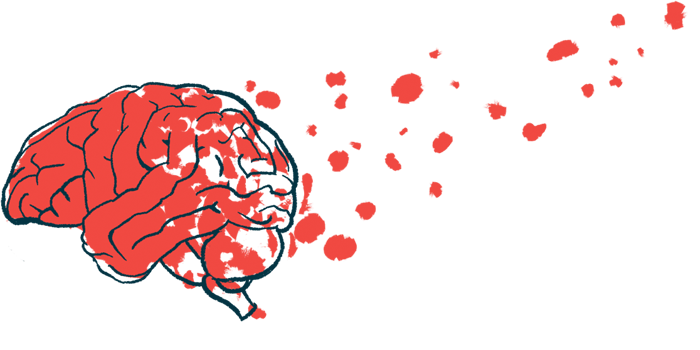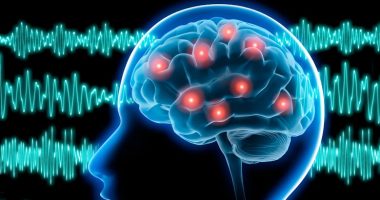Brain Mapping Study Shows Gene Changes With Therapeutic Potential

Scientists have created a map of the cells contained in human brain blood vessels. Using the map as a reference, they have discovered certain gene changes occurring in specific brain cells in Huntington’s disease.
The study, “Single-cell dissection of the human brain vasculature,” was published in Nature.
The brain blood vessel network (cerebrovasculature), which delivers oxygen and nutrients to the brain and clears out waste material, has unique barrier properties that regulate the movement of substances in and out of it.
Many brain disorders, including Huntington’s disease, are thought to occur because cerebrovascular cells become impaired and the blood-brain barrier — a semipermeable membrane that protects the brain against the external environment— can break down and become “leaky.”
Studying this network of cells could help researchers understand how brain diseases develop and potentially create treatments to manage them.
“We think this might be a very promising route because the cerebrovasculature is much more accessible for therapeutics than the cells that lie inside the blood-brain barrier of the brain,” Myriam Heiman, associate professor at the Massachusetts Institute of Technology (MIT) department of brain and cognitive sciences, said in a news release. Heiman is also a member of the Picower Institute for Learning and Memory.
Studying these cells is challenging, however, because brain blood vessel cells are scarce and difficult to harvest on a large scale with currently available techniques.
In the current study, scientists developed a new technique that allowed them to collect and then study these cells with single-cell RNA sequencing, which lets scientists study a cell’s function based on the types of genes it expresses and proteins it produces. Gene expression is the process by which information in a gene is synthesized to create a working product, like a protein.
For the study, the scientists harvested brain blood vessel cells from more than 100 human post-mortem brain tissue samples and 17 healthy brain tissue samples obtained from younger patients undergoing surgery to treat epileptic seizures. The samples were processed to harvest relevant cells and sorted into different subtypes based on the genes they expressed using computer software.
The scientists obtained 4,992 cells from the healthy brain tissues and 11,689 cells from the post-mortem tissues. Of all the cells, they found 11 subtypes of blood vessels cells, including endothelial cells (cells lining blood vessels), mural cells and fibroblasts, all with distinct identifying genes.
They found strong expression of 17,212 genes, some of which were active differently on some cells. The varied expression allowed the scientists to determine the function of each cell. They also found new distinctive genes to identify blood vessels cells. These genes were preserved in both healthy and post-mortem brain tissues. While most of the cells in the healthy brain tissues had similar gene expression patterns to post-mortem tissues, some differences were noted, possibly due to aging.
“This study allowed us to zoom in to this incredibly central cell type that facilitates all of the functioning of the brain. What we’ve done here is understand these building blocks and this diversity of cell types that make up the vasculature in unprecedented resolution, across hundreds of individuals,” Manolis Kellis, professor of computer science at MIT, said.
Using their new brain map, the researchers analyzed brain tissue samples from patients with Huntington’s. They found that 4,698 genes were expressed differently in Huntington’s brain tissues compared to healthy brain tissues. Many of these genes were less active in Huntington’s disease, particularly the gene for MFSD2A, a protein that restricts the movement of lipids across the blood-brain barrier. This suggested that the loss of this protein and other changes observed could contribute to leakiness and impaired functioning of the blood-brain barrier.
Endothelial cells in Huntington’s brain tissue also showed increased activity of genes promoting the formation of new blood vessels, which researchers believe contributes to increased blood vessel density typically seen in Huntington’s. Other genes involved in innate immunity, including Wnt, were also highly active, possibly contributing to blood-brain barrier dysfunction.
Since overactivation of the innate immune system seems to occur with leakiness of the blood-brain barrier, the researchers believe therapies blocking the activation of the innate immune system could maintain blood-brain barrier functioning in Huntington’s.
“Our work reveals that this innate immune activation co-occurs with loss of endothelial tight junction protein expression, suggesting that blockade of innate immune activation in the HD [Huntington’s disease] brain could prevent loss of BBB [blood-brain barrier] integrity,” they wrote.
The researchers plan to conduct further mapping studies of other brain blood vessels, particularly large blood vessels, since they play essential roles in different brain diseases.
“Our goal is to build a systematic single-cell map to navigate brain function in health, disease, and aging across thousands of human brain samples. This study is one of the first bite-sized pieces of this atlas, looking at 0.3% of cells. We are actively analyzing the other 99% in multiple exciting collaborations, and many insights continue to lie ahead,” Kellis said.







